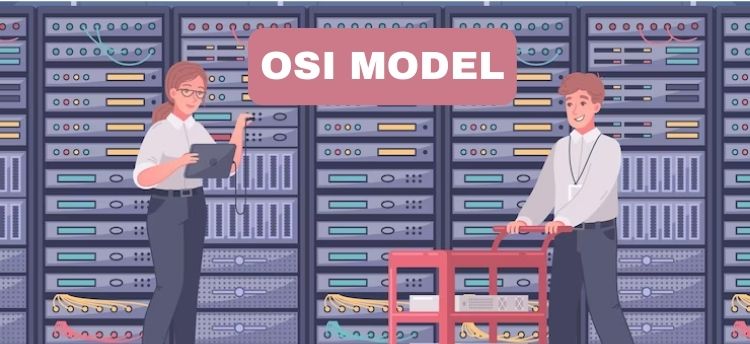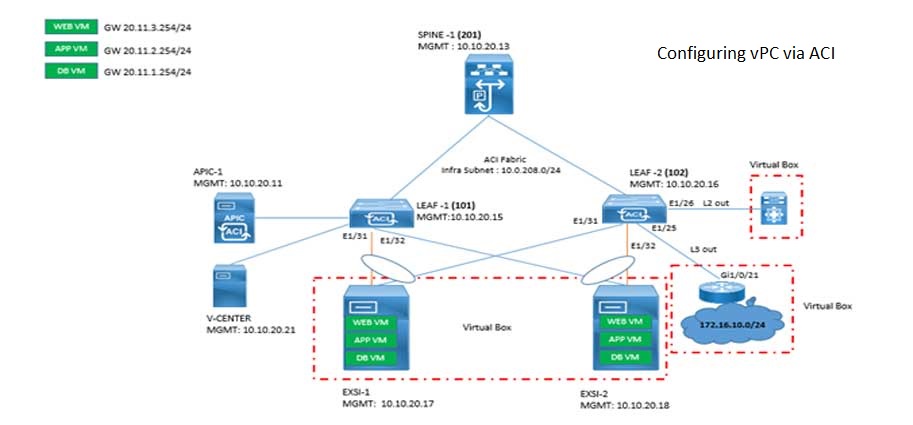
Hey there, tech enthusiast! Today, we're diving into the nitty-gritty of the OSI model – a fundamental concept in networking that helps us understand how data travels from point A to point B. It might sound complicated, but fear not,
The OSI (Open Systems Interconnection) model defines a networking framework to implement protocols in different layers. It's a key concept to understand the fundamental of IT infrastructure and essential network communications.
It has seven layers and each layer has specific function. It starts from physical layer and goes up to application layer. I'll take up each layer with example in this blog.
Cisco enterprise training courses for beginners such as CCET foundation often covers OSI layers extensively. Learning the core concepts of each layer build a solid foundation for working on networking products, services like designing and troubleshooting networks etc.
This article may the good start for the learners who want to start their journey in the field of IT networking and planning to pursue CCNA certification courses. It can be an alternative to training for this particular topic but can not completely remove the training requirement.
I'll break it down step-by-step! Let's start with what are OSI layers model first.
What are OSI Layers?
Alright, let's start with the basics. What in the world is this OSI layer model thing? Well, it stands for the Open Systems Interconnection model. It's like a blueprint for how computer networks should communicate with each other. Imagine it as a tasty multi-layered cake where each layer has its unique purpose.
So, how many layers are there in this cake (OSI model)?
Ah, great question! The OSI model has a fantastic seven layers, my friend. Each layer is like a tiny cog in the networking machine.
Now let's talk about all OSI model and layers
Layer 1: The Physical Layer
This is where the magic begins, at the Physical Layer! It's all about those physical connections – the cables, switches, and routers. You can think of it as the foundation of our cake, providing the physical means to transmit data.
Question: What does this layer do, exactly?
Well, it handles how raw data bits are sent over different media like copper wires or optical fibers. It's responsible for turning those 0s and 1s into electrical signals that zoom through the cables.
Layer 2: The Data Link Layer
Moving on to the Data Link Layer! Here, things get a bit more interesting. It deals with organizing the data into frames and making sure they arrive at the right destination without errors.
Question: Errors? Uh-oh, what if there's a mistake?
Don't worry! The Data Link Layer has your back. It performs error-checking, ensuring that the data frames are received correctly. If something goes awry, it can ask for a resend.
Layer 3: The Network Layer
Time for the Network osi model Layer, my friend! This is where the real navigation happens. It's like a GPS for data, making sure packets find the best route to reach their destination across different networks.
Question: How does it know where to send the data?
Good question! The Network Layer uses IP addresses to figure out where the data needs to go. It's like using a virtual address to pinpoint the location of the recipient.
Layer 4: The Transport Layer
Ah, the Transport Layer – the bridge between the upper and lower layers. This one's responsible for end-to-end communication, ensuring data gets delivered intact and in the correct order.
Question: Is it like a postman delivering letters?
Exactly! The Transport Layer makes sure that packets arrive in the right order and that nothing goes missing, just like a diligent postman delivering your letters.
Layer 5: The Session Layer
Now we're at the Session Layer! Think of it as the coordinator of the networking party. It sets up, maintains, and tears down communication sessions between applications.
Question: So, it's like hosting a virtual meetup?
Absolutely! The Session Layer makes sure everyone gets a chance to talk and keeps track of who's speaking, just like a virtual meetup host.
Layer 6: The Presentation Layer
Here comes the Presentation Layer, the language translator of the OSI world. It takes care of data formatting and makes sure that information is readable by the receiving application.
Question: So, it's like converting different languages?
You got it! The Presentation Layer converts data into a format that the receiving application can understand, like translating between different languages.
Layer 7: The Application Layer
Finally, the cherry on top – the Application Layer! This is where you, the user, interact with the network through your favorite applications like browsers or email clients.
Question: How does this layer work?
The Application Layer provides interfaces for you to access network services, making it easy for you to browse the web, send emails, and do all the cool stuff you love!
Conclusion
Now, you have done with the function of OSI model. You've successfully completed the OSI model's seven layers in short blog. I am sure you got a better understanding of how networks communicate.
Don't Miss to Checkout Our Next Articles
Understand Network Hardware Devices
Know More About Cisco Hardware Equipment's
Other Popular & Useful Articles
Know More About CCNA Exam Fees
Comments (0)
Categories
Popular posts


Cisco Nexus Port Channel: Configuring ...
6 May 2024
Configure Rapid PVST on Cisco Nexus
26 Apr 2024
Palo Alto Exam Cost: PCNSA, PCNSE & More
27 Apr 2024
Cisco ACI VPC Configuration Task Steps
28 Apr 2024Recent posts

CCNA Exam Fees and Expenses Breakdown
16 May 2024
CCNA vs CCNP Certification: Differences
16 May 2024
What is CCNA: Exploring Its Significance
16 May 2024
Step by Step cisco WLC configuration
15 May 2024



